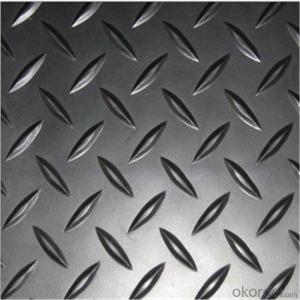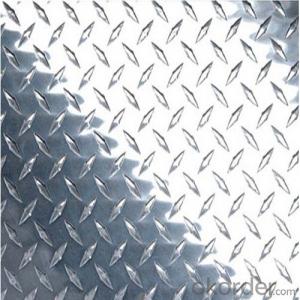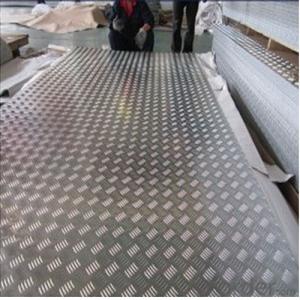Diamond Plate Aluminum Sheeting
Diamond Plate Aluminum Sheeting Related Searches
Led Light Bulbs For Ceiling Fixtures Led Lamps For Ceiling 42 In Ceiling Fan With Light Aluminum Coil Stock For Gutters Aluminum Foil For The Grill Hole Saw For Aluminum Plate Aluminum Tread Plate For Trailer Bow Plate For Aluminum Boat Aluminum Foil For Grow Room Aluminum Foil For Joint PainHot Searches
Stock Price For Aluminum Aluminum Coil Stock For Sale Aluminum Gutter Coil For Sale Used Aluminum Scaffolding For Sale 1/4 Aluminum Plate For Sale Aluminum Bar Stock For Sale Aluminum Round Stock For Sale Aluminum Diamond Plate For Sale Aluminum Scaffolding For Sale Craigslist 6061 Aluminum Plate For Sale Aluminum Dock Plate For Sale 7075 Aluminum Plate For Sale Aluminum Tread Plate For Sale Aluminum Checker Plate For Sale Aluminum Plate For Sale Near Me Plate Aluminum For Sale Aluminum Plate For Sale Aluminum Square Stock For Sale Aluminum Flat Stock For Sale Billet Aluminum Stock For SaleDiamond Plate Aluminum Sheeting Supplier & Manufacturer from China
Okorder.com is a professional Diamond Plate Aluminum Sheeting supplier & manufacturer, offers integrated one-stop services including real-time quoting and online cargo tracking. We are funded by CNBM Group, a Fortune 500 enterprise and the largest Diamond Plate Aluminum Sheeting firm in China.Hot Products
FAQ
- Aluminum sheets are manufactured through a process called rolling, where aluminum billets are heated and passed through a series of rolling mills to reduce their thickness. The billets are first heated to a specific temperature and then rolled multiple times, with each pass reducing the thickness of the sheet until the desired gauge is achieved. The process also involves annealing, where the sheets are heat-treated to improve their strength and flexibility. Finally, the sheets are cut to the desired length and width before being packaged for distribution.
- Aluminum sheets, in general, show resistance to impact and vibration. The notable feature of aluminum lies in its remarkable strength-to-weight ratio, rendering it a robust and lightweight substance. With commendable mechanical properties, including outstanding resistance to impact and vibration, aluminum sheets frequently find application in various sectors necessitating protection against such forces. Take, for instance, automotive parts, aircraft structures, and building facades. Furthermore, the addition of other elements to aluminum alloys can amplify its impact resistance and diminish vibrations. To sum up, aluminum sheets prove to be a dependable option in enduring the forces of impact and vibration.
- Yes, 101 aluminum sheets are resistant to corrosion. Aluminum is naturally resistant to corrosion due to its oxide layer that forms on its surface when exposed to oxygen. This oxide layer acts as a protective barrier against corrosion and prevents the metal from deteriorating. Additionally, the 101 aluminum alloy is specifically designed to have enhanced corrosion resistance properties, making it even more resistant to corrosion compared to other aluminum alloys. Therefore, 101 aluminum sheets are a reliable choice when corrosion resistance is a concern.
- I heard somewhere that when aluminum is heated, it releases something that is a known cause of Alzheimers. Is this true? I have a homemade cooker made of aluminum and I don't want Alzheimers.
- Yes, it can, throw it away, aluminium in deodorant can also cause breast cancer, so use one that is aluminium free
- There are several different surface patterns and textures available for aluminum sheets, each designed to serve specific purposes and provide unique aesthetic appeal. Some of the most common surface patterns or textures for aluminum sheets include: 1. Smooth: Smooth aluminum sheets have a flat and polished surface without any visible patterns or textures. This type of finish is often used for applications where a clean and sleek appearance is desired, such as architectural elements or interior design. 2. Diamond Plate: Diamond plate aluminum sheets feature a raised diamond pattern on the surface, which provides excellent traction and slip resistance. This texture is commonly used for flooring, stairs, ramps, and industrial applications where grip and durability are essential. 3. Brushed: Brushed aluminum sheets have a consistent linear pattern created by brushing the surface with fine abrasive pads. This finish gives a satin-like appearance, making it popular for decorative purposes like signs, furniture, appliances, and automotive trim. 4. Stucco: Stucco textured aluminum sheets have a raised pattern resembling a stucco wall finish. This texture is achieved by embossing the sheet with a stucco roller, creating a rough and durable surface. Stucco patterned sheets are commonly used for exterior cladding, roofing, and decorative applications. 5. Hammered: Hammered aluminum sheets have a unique texture that resembles the surface of hammered metal. This finish is achieved by imprinting the sheet with a pattern of small indentations using a hammer or similar tool. Hammered sheets are often used for decorative purposes, such as backsplashes, countertops, and art installations. 6. Perforated: Perforated aluminum sheets have a pattern of small holes punched into the surface, allowing for airflow, light transmission, and sound absorption. This texture is commonly used for architectural elements, screens, filters, and ventilation systems. These are just a few examples of the surface patterns and textures available for aluminum sheets. Each texture serves a specific purpose and provides distinct visual appeal, allowing for a wide range of applications in various industries.
- Indeed, aluminum sheets have the potential to serve as a viable substitute for plastic in specific scenarios. Aluminum, as a material, possesses the qualities of being lightweight and long-lasting, presenting numerous advantages over plastic. It boasts an outstanding strength-to-weight ratio, rendering it suitable for applications that demand resilience to impact or heavy loads. Furthermore, aluminum exhibits a high resistance to corrosion, making it an excellent choice for outdoor or marine applications where plastic may deteriorate over time. Furthermore, aluminum proves to be an exceedingly recyclable material, aligning with the increasing emphasis on sustainability and waste reduction. Unlike plastic, which can take centuries to decompose, aluminum can be recycled indefinitely without compromising its properties. This renders aluminum a more environmentally-friendly option for applications where plastic waste is a concern. Moreover, aluminum sheets offer superior thermal conductivity in comparison to plastic, making them ideal for applications that necessitate heat dissipation or thermal management. As a result, aluminum emerges as the preferred choice for products like heat sinks or electronic enclosures. However, it is crucial to acknowledge that aluminum sheets may not always be the optimal alternative to plastic. Plastic possesses its own set of advantages, such as its lightweight nature, flexibility, and cost-effectiveness, rendering it more suitable for applications that require these properties. Additionally, plastic can be molded into intricate shapes, making it preferable for certain designs. In conclusion, aluminum sheets can prove to be an effective substitute for plastic in specific applications where their strength, durability, corrosion resistance, recyclability, or thermal conductivity offer advantages. Nevertheless, the ultimate decision between aluminum and plastic hinges upon the specific requirements and limitations of the given application.
- Yes, aluminum sheets are suitable for marine vessel construction. Aluminum is lightweight, strong, and resistant to corrosion, making it an ideal material for building boats and ships. It also offers good thermal conductivity and is easily weldable, making it a popular choice in the marine industry.
- The impact strength of aluminum sheets can differ depending on the alloy and temper of the material. Nevertheless, when compared to other metals, aluminum sheets generally possess a relatively lower impact strength. This is due to the fact that aluminum, being a lightweight material, lacks the strength and durability of steel or other alloys. To measure the impact strength of aluminum sheets, one typically determines the energy required to cause the material to fracture or deform, which can be expressed in joules or foot-pounds. Although specific values may vary, the impact strength of aluminum sheets typically falls within the range of 10 to 40 joules or 7 to 30 foot-pounds. It is worth noting that factors such as thickness, surface condition, and the presence of surface treatments or coatings can influence the impact strength. Therefore, it is advisable to consult the manufacturer's specifications or conduct specific tests to ascertain the impact strength of a particular aluminum sheet.














































